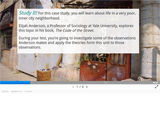
Street Codes Slideshow
- Subject:
- Career and Technical Education
- Criminal Justice
- Material Type:
- Interactive
- Provider:
- Michigan Virtual
- Date Added:
- 07/29/2019

Street Codes Slideshow

Acts of Violence Slideshow

Orlando Pulse Club Shooting Slideshow
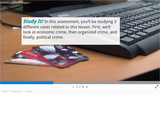
Economic Crime, Organized Crime, Political Crime

Operation Paris (OpParis) "Anonymous" Cyberattacks

Chinese-US Espionage Slideshow

Domestic Violence Incident Slideshow

Criminology unit 8 final project directions
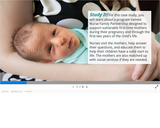
Nurse-Family Partnership "Study It" Slideshow
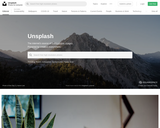
This website has a multitude of beautiful and free pictures that can be used in a variety of settings. It is especially helpful when creating presentations.

it would be ideal if students already have learned that DNA is the genetic material, and that DNA is made up of As, Ts, Gs, and Cs. It also would help if students already know that each human has two versions of every piece of DNA in their genome, one from mom and one from dad. The lesson will take about one class period, with roughly 30 minutes of footage and 30 minutes of activities.
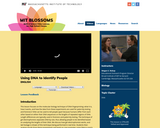
it would be ideal if students already have learned that DNA is the genetic material, and that DNA is made up of As, Ts, Gs, and Cs. It also would help if students already know that each human has two versions of every piece of DNA in their genome, one from mom and one from dad. The lesson will take about one class period, with roughly 30 minutes of footage and 30 minutes of activities.
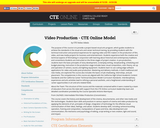
The purpose of this course is to provide a project-based visual arts program, which guides students to achieve the standards in the visual arts and career technical training, by providing students with the technical instruction and practical experiences for aspiring video and film makers in the production of film, video, and new media projects for business and entertainment. Students experience both the creative and technical aspects of filmmaking in conjunction with learning about historical and contemporary traditions and conventions.Students are instructed on the three stages of project creation. In pre-production, students learn the basic principles of story development, screenplay writing, storyboarding, scheduling and budget planning. Instruction in the production stage includes basic visual composition, color theory, set up and operation of camera, sound, and lighting equipment. Students learn to use cutting-edge software applications for video and audio post-production. Mastering and delivery methods, in both traditional and new media, are explored.The course also includes the basics of job shadowing, internships, and job placement. The competencies in this course are aligned with the California High School Academic Content Standards and the California Career Technical Education Model Curriculum Standards. Interdisciplinary experiences and arts activities lead to refining a personal aesthetic, and a heightened understanding of career opportunities in art and arts-related fields.
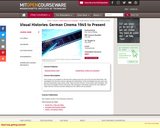
This course is an invitation to German film-making since the end of the Second World War. We investigate how German cinema captured the atmosphere of the immediate post-war years and discuss extensively major works of the "New German Cinema" of the Sixties and Seventies. We also look at examples of East Germany's film production and finally observe the very different roads German cinema has been taking from the 1990's into the present.

This article describes seven strategies for assisting English Language Learners with science vocabulary development.
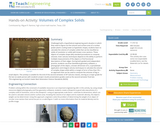
Challenged with a hypothetical engineering work situation in which they need to figure out the volume and surface area of a nuclear power plant’s cooling tower (a hyperbolic shape), students learn to calculate the volume of complex solids that can be classified as solids of revolution or solids with known cross sections. These objects of complex shape defy standard procedures to compute volumes. Even calculus techniques depend on the ability to perform multiple measurements of the objects or find functional descriptions of their edges. During both guided and independent practice, students use (free GeoGebra) geometry software, a photograph of the object, a known dimension of it, a spreadsheet application and integral calculus techniques to calculate the volume of complex shape solids within a margin of error of less than 5%—an approach that can be used to compute the volumes of big or small objects. This activity is suitable for the end of the second semester of AP Calculus classes, serving as a major grade for the last six-week period, with students’ project results presentation grades used as the second semester final test.
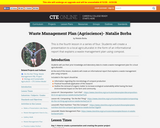
This is the fourth lesson in a series of four. Students will create a presentation to a local agriculturalist in the form of an informational report that explains a waste management plan using compost.
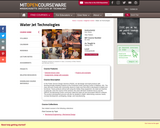
In this Public Service Design Seminar (PSDS), we will design and build products with developmentally disabled students at the Protestant Guild Learning Center in Waltham, MA. The class will work closely with community clients to make sure that what is developed is helpful and functional. These products will be built using the Hobby Shop equipment, the water jet machine in particular. Over the course of the seminar, this class will teach students how to use the water jet machine and associated OMAX software. The product development process will also be detailed in depth: determining customer needs, concept development, prototyping, design, and manufacturing.

Free web accessibility tools for schools, educators and students. These resources are teacher-friendly and focus on tools and practices that teachers can use to determine how accessible websites or digital content are for their students.

The Welding Technology course provides students with an understanding of manufacturing processes and systems common to careers in welding and related industries. Topics include the interpretation and layout of welded and assembled-parts, reading blueprints and understanding welding symbols. Further topics included are the common welding processes found in industry, metal charcteristics and finishing processes dealing with welded parts and projects.